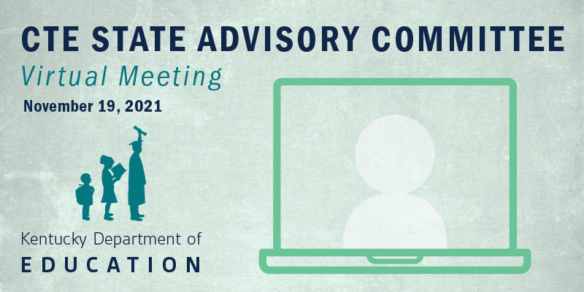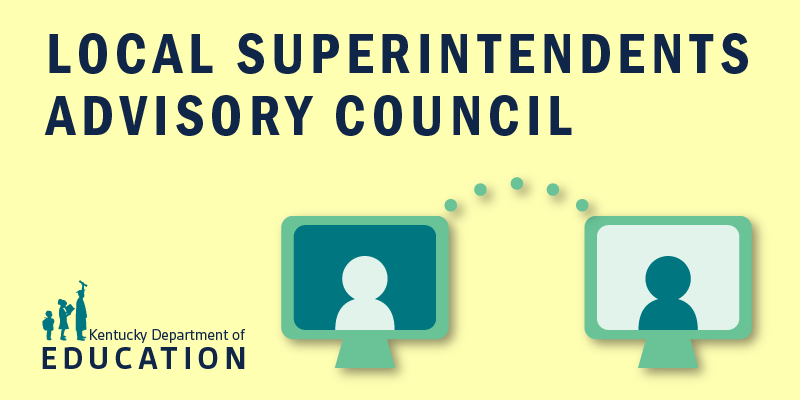
At its Nov. 19 meeting, the Kentucky Department of Education’s (KDE) Career and Technical Education (CTE) Advisory Committee discussed additional budget requests for the upcoming legislative session and data on dual credit enrollment.
Members of KDE’s Office of Career and Technical Education (OCTE) recently met with the 2021 Budget Review Subcommittee on Economic Development, Tourism, and Environmental Protection about how CTE students can help address the labor shortage in Kentucky.
“K-12 CTE is providing students to fill those empty jobs and positions after graduation,” said David Horseman, KDE associate commissioner in the OCTE.
Horseman said conversations on funding have been reignited. In 2019, a joint taskforce from both chambers had a series of discussions on CTE funding that lasted 6 months. The taskforce opted to continue the discussions at a later date to clarify some issues on who gets funding.
CTE is currently delivered through state-operated area technology centers (ATCs), locally operated career and technical centers (CTCs) governed by a local school district and local area vocational centers (LAVECs), a district-governed school that receives supplemental funding from the state.
“This year we’ve had some conversations with a couple of folks from the (Kentucky) House. … [We are] going through the whole process and informing them of all the issues around funding,” said Horseman. “Those conversations have gone really well.”
Due to existing statutes, regulations and funding levels, several locally run CTE programs, such as LAVECs, are unfunded and inequitable in terms of what programs are available to students. There are also CTE programs and centers receiving no additional funding. Horseman said the goal is to shift to a full-time equivalent student model – the money follows the student.
“It shouldn’t matter where you are teaching CTE, whether in a center or high school, local or ATC, [all] should receive equitable funding,” said Horseman.
In order to achieve more equitable funding, KDE has proposed three additional budget requests (ABRs) for the 2022 legislative session. KDE is asking for $3 million to support ATC equipment needs and operating costs, $6 million to add funding for nine-13 currently unfunded LAVECs and $500,000 to cover retirement and separation payouts for ATC state employees.
Commissioner of Education Jason E. Glass echoed Horseman’s concern on the funding structure during his update and said, “There is work to be done.”
“[We need to be] adequately funding CTE so it has the capacity to deliver the kind of experiences our students need to have to be competitive in a global workforce,” he said.
Dual Credit Data Sharing
OCTE Data Manager Scott U’Sellis shared with the committee dual credit and CTE dual-credit enrollment data for the 2020-2021 school year. CTE dual-credit classes are non-general education courses where students can earn college and high school credit at the same time. The CTE courses are typically technical classes such as health sciences, information technology and engineering.
In the 2020-2021 school year, there were 78,890 total dual credit enrollments. This number is determined by the unique number of enrollments, not students. If a student is enrolled in three dual-credit classes, they would count for three enrollments.
Out of all dual-credit enrollments, 31.9% of enrollments were CTE dual-credit enrollments. This is a slight increase from the 2019-2020 school year, when CTE enrollment was 31.4% of dual credit enrollments.
More than 30 higher education partners participate in the Dual Credit Scholarship and Kentucky Work Ready Scholarship dual credit enrollment scholarship programs. Administered by the Kentucky Higher Education Assistance Authority, the scholarships assist students who are taking dual credit classes at a participating Kentucky college or university. Eligible students may receive scholarships for up to two classes using the Dual Credit Scholarship and for up to two technical classes per academic year using the Kentucky Work Ready Scholarship. U’Sellis noted that other universities also may offer dual credit, but do not participate in the program.
For the 2020-2021 school year, 169 of the state’s 171 districts had students enrolled in dual credit classes and 158 districts had students enrolled in CTE dual credit courses. U’Sellis said OCTE is actively looking for ways to get all counties across the Commonwealth involved.
U’Sellis also shared the School Report Card data and applauded how it showcases the types of students being reached through CTE. Over 36,000 high school students participated in dual credit during the 2020-2021 school year. Highlighting a small portion of the report, he pointed out there is a 7% gap between the number of female and male high school students enrolled in dual credit courses, with more female student taking and completing courses than male students.
The committee also:
- Heard from Leslie Slaughter, executive adviser of OCTE, about the new logo, tag line and roll our plans for CTE marketing. Slaughter also gave the group an update on an exciting new Career Advising Tool that is in development;
- Heard from OCTE Division Director Beth Hargis on some of the successful achievements of students in the ATCs. Hargis also shared about businesses that have donated to programs;
- Heard from OCTE Division Director Pamela Moore on the success of CTE student organizations in national competitions this year.




Leave A Comment